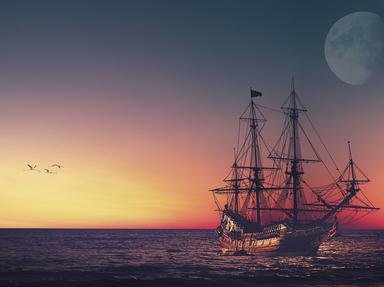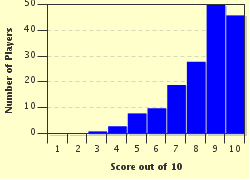Quiz Answer Key and Fun Facts
1. Vasco de Gama: This Portuguese explorer was searching for a better and faster way to get spices for trade in the late 1400s. To which country was he seeking access across the oceans?
2. Juan Ponce de Leon: This Spanish sailor and adventurer spent time in the West Indies, Hispaniola, Puerto Rico, and Florida. He was looking for gold but also on a quest for a special fountain he had heard about from the natives. What was this mystical font?
3. David Livingstone: This Scottish explorer and missionary spent most of his life exploring a continent during the 1800s. Whereas he wanted to spread Christianity in the land and learn about the peoples, his ultimate goal was to find the source of a major river. What was this waterway?
4. James Cameron: This acclaimed movie director from Canada not only won many awards for his films but also was the first solo person to reach a certain goal. What particular geographical point was his ultimate prize?
5. Sir Walter Raleigh: This English explorer was a favorite in the court of Queen Elizabeth I and was instrumental in getting colonists to the new area of America he called Virginia. However, he was always searching for a mythical city of untold riches. What was it called?
6. Roald Amundsen: This explorer from Norway spent most of his life in colder climates. In the early 1900s he completed a quest of which he had always dreamed. What location was he the first person to find and investigate?
7. Meriwether Lewis: This soldier and explorer teamed up with his friend William Clark and, at the behest of Thomas Jefferson, explored the area west of the Mississippi River. What was Lewis' goal while on this grand and dangerous adventure?
8. Gertrude Bell: This British woman was an explorer, an archaeologist, a politician, and an author. Throughout her adventurous life, she had a goal to preserve the culture of a particular country and to let others know about the area. Once known as part of Mesopotamia, what is this country today?
9. Samuel de Champlain: This French explorer and geographer helped introduce the world to Canada and its peoples. During his multiple trips to the country, what industry was he focusing on as his goal to make France dominate in the field?
10. Neil Armstrong: This pilot was an explorer whose goal was to be the first person to step on land that was not even part of Earth. In 1969, on what celestial body did he accomplish that mission?
Source: Author
stephgm67
This quiz was reviewed by FunTrivia editor
bloomsby before going online.
Any errors found in FunTrivia content are routinely corrected through our feedback system.

